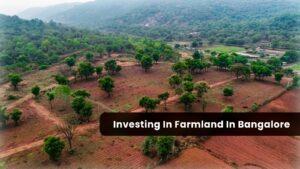Specify Your Investment Objectives And Risk Tolerance.
Think about your age, salary, and financial obligations when deciding on your investment goals. Are you putting money aside for retirement, a house down payment, or your child’s education? Your objectives will aid in determining how much money you should invest and how long it will take you to accomplish those objectives.
It’s crucial to evaluate your risk tolerance after you’ve determined your investment goals. How much danger are you willing to accept in exchange for the possibility of greater rewards? This will rely on your individual financial status and level of risk tolerance. You may be more willing to make bigger risk investments if you are younger and have a longer time horizon. However, you might want to think about more cautious investments if you’re getting closer to retirement or have a reduced risk tolerance. You may choose assets more wisely if you are aware of your investment objectives and risk tolerance.
Employ A Variety Of Asset Classes
To create a diverse investing portfolio, select a variety of asset classes. This entails making investments in a variety of assets, including stocks, bonds, properties, and commodities. By investing in a variety of asset classes, you can lower your total risk while still getting a fair return on your money because each asset class has its own amount of risk and return. Your unique goals, level of risk tolerance, and time horizon will determine the precise asset class mix. Working with a financial advisor to find the ideal blend for you is crucial.
Consider investing more significantly in stocks and real estate if you want to see long-term growth. Bonds and commodities might be a better option if you’re seeking for security and income. It’s crucial to take your risk tolerance into account. Stocks and commodities may be better investments for you if you don’t mind taking on extra risk. Bonds and real estate might be a better option for you if you’re more risk-averse. In the end, selecting a combination of asset classes that is compatible with your objectives and risk tolerance is the key to creating a successful investing portfolio. You should also frequently examine your portfolio and make any adjustments.
Pick Specific Investments From Each Asset Class
Once you have determined the asset classes you want to invest in, it’s time to select individual investments within each class. This is where you will need to perform some study and analysis to locate the finest possibilities for your portfolio. Look for assets that have a great track record of performance, reasonable costs, and a good fit with your entire investment strategy. By making investments in various businesses or industries, think about diversifying even further within each asset class. To keep your portfolio diverse and in line with your goals, keep an eye on your investments and examine them frequently.
Your risk tolerance and investment objectives should be taken into account when choosing specific investments within each asset class. For instance, if you’re seeking long-term growth, you might want to think about buying stocks from businesses that have a track record of consistent growth. However, if you’re searching for income, you might want to think about investing in bonds or dividend-paying equities. It’s also crucial to take into account the fees related to each investment, as high fees will eventually reduce your earnings.
Regularly Reset Your Portfolio
A vital component in maintaining a sound investment plan is portfolio rebalancing. Over time, it helps to reduce risk and increase profits. If, for instance, the stock market has performed remarkably well and your initial allocation was 60% equities and 40% bonds, your portfolio may now be 70% stocks and 30% bonds. This indicates that you are assuming greater risk than you had anticipated. You can restore your portfolio to its original allocation by rebalancing by selling some of your stocks and purchasing more bonds. This makes it easier to make sure that your assets are in line with your investing objectives and risk tolerance. To keep your portfolio on track, don’t forget to examine it frequently and make adjustments as necessary.
Monitor And Adjust Your Portfolio Overtime
It takes time to create a diversified investing portfolio. To make sure that your investments are operating as anticipated and in line with your financial objectives, it necessitates constant monitoring and modifications. Maintain a regular evaluation of your portfolio and make any necessary adjustments, such as selling underperforming investments or rebalancing your asset allocation. Remember that when your financial condition and goals change, your investment plan may also need to alter.
Managed Farmland An Aid In Building Diversified Portfolio
Managed farmland can help in building a diversified portfolio in several ways:
- Low Correlation With Other Asset Classes: Investments in farmland have historically had a low correlation with other asset classes like equities and bonds, which makes them a desirable complement to a diversified portfolio.
- Stable Returns: Investments in farmland often provide reliable returns over the long term. Farmland’s worth tends to increase with time, and investors can make money by renting the land to farmers.
- Inflation Hedge: Farmland can act as an inflation hedge since food prices often rise along with inflation and because farmland values historically have risen during periods of high inflation.
- Risk Mitigation: Investment in farms can also help a portfolio’s risk be reduced. Due to the constant demand for agricultural commodities, farmland investments are typically less volatile than those in other asset groups.
Overall, adding managed farmland to a portfolio can reduce risk and increase diversification while still delivering reliable returns. It is significant to remember that investments in farmland may have certain risks, such as weather-related risks, legal risks, and operational risks. Therefore, before making any investing decisions, it is essential to perform careful due diligence.
We at Mogg’s Estates can assist you at every stage of the process if you’re trying to diversify your portfolio using managed farmlands. We are a Bangalore-based managed farmland company that handles all aspects of farming. Every step of the journey has us by your side. Starting with assisting you in selecting the ideal acreage in a posh neighborhood with a variety of amenities like water and electricity. In addition, we oversee all farming activities in your farmlands on your behalf, hire the best farm managers to look after your crops and ensure that they produce abundantly, and subsequently we market the harvests and transfer the profits to you.
Call us at 9513655556 if you are interested in investing in managed farmlands and find this investment opportunity appealing.



